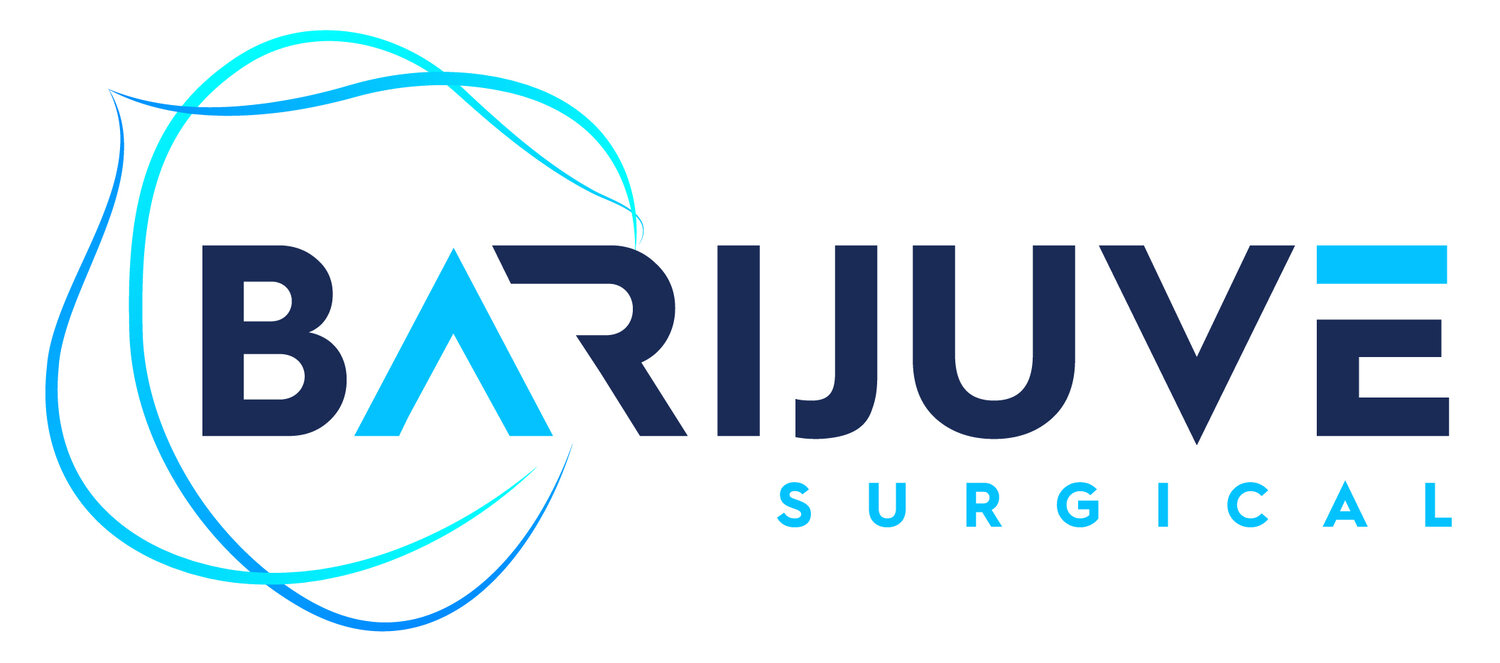Batiatric Surgical Options
“Life is a matter of choices, and every choice you make makes you.” John C. Maxwell
The field of bariatric and metabolic surgery has evolved over the past decades. Some of the very original pioneered procedures disappeared while giving birth to much more refined surgeries that have safer profiles and lead to excellent weight loss results. These relatively newer operations are conducted exclusively through either minimally invasive surgical or endoscopic techniques.
Primary Operations
Sleeve Gasterctomy
In 1990, sleeve gastrectomy was originally described as part of a more evolving surgery. Nine years later, the first successful sleeve gastrectomy was reported. Since then, it has been a very sussecful performance.
The sleeve gastrectomy consists of the creation of a small stomach sleeve in the shape of a banana that is about one half an inch wide while removing the rest of the stomach. The limited stomach space restricts the amount of food that can be eaten, while hunger hormones decrease to help control hunger between meals.
Individuals are expected to lose 60 % of excess weight in about two years.
To learn more about the sleeve gastrectomy, click here
Roux-en-Y Gastric Bypass
The Roux-en-Y gastric bypass is a surgery that limits food intake and absorption. It was first described in 1966, but the first laparoscopic version was done in 1994. The operation has an unbeatable history track.
A small stomach pouch is created and attached directly to the small intestine, thereby bypassing the rest of the stomach and the upper part of the intestine. The smaller stomach reduces food intake by helping the individual feel full faster while bypassing the intestine helps control hunger between meals, as well as improved conditions such as diabetes.
To learn more about the gastric gastrectomy, click here
Single-Anastomosis Duodenal Switch
SADI is an innovative weight loss and metabolic procedure. The operation depends primarily on intestinal malabsorption, but also utilizes gastric reduction to achieve weight loss. It is a simplified version of an older surgery called a "duodenal switch". It bypasses a significant portion of the intestine, thereby limiting absorption and improving weight loss. The surgery is conducted through laparoscopy or with robotic technology. It has been associated with excellent outcomes with a very safe profile.
To learn about SADI, click here
Lap Band
Laparoscopic adjustable gastric banding was first described in 1985. The lap band surgery will place an adjustable silicone band around the upper portion of the stomach to create a small pouch. The pouch helps limit food intake by creating a sense of fullness.
Approximately 45 % of excess weight loss is expected to be achieved in 2 years.
To learn more about the lap band, click here
Sleeve Gastroplasty
Laparoscopic gastric plication or sleeve gastroplasty is a newer minimally invasive weight-loss surgery technique that reduces the size of the stomach capacity to approximately 3 ounces.
The procedure does not involve the use of an implanted device (such as gastric banding). Also, unlike the gastric sleeve procedure, gastric plication may be reversible because a portion of the stomach is not removed. In addition, unlike gastric bypass, gastric plication does not involve rerouting and reconnecting the intestines.
It is a restrictive weight-loss surgery, meaning that it restricts the amount of food the stomach can hold. Individuals feel full sooner and they do not want to eat as much.
Gastric Balloons
The gastric balloon procedure offers modest weight loss results in a noninvasive way. During the procedure, an inflatable balloon is placed in the stomach with the ability to limit the amount of space available in the stomach and create a sense of fullness with less food. Such balloon is only allowed to remain in the stomach for six months before it is retrieved.
To learn more about gastric balloons, click here
Revisional Operations
GERD after Sleeve Gastrectomy
Gastric reflux has posed some management challenges in some patients after sleeve gastrectomy. Although some published data have shown that GERD could potentially improve with sleeve gastrectomy, other publications have demonstrated worsening of pre-existing GERD and a rate of 18% of de Novo GERD (new GERD after the surgery).
To learn more about GERD and Sleeve gastrectomy, click here
Inadequate Weight Loss or Weight Regain
Even in the best circumstances, the outcome of any kind of surgery may not lead to the full anticipated 100% results. Bariatric surgery is no exception to this dogma. I have been seeing more and more of patients reaching my office seeking to convert their original bariatric surgery into another procedure for various reasons but primarily for either insufficient weight loss or weight regain after the original surgery.
To learn more about the topic, click here
Past Complication with Clinical Impacts
There are patients who I am fortunate to experience some complications following any surgeries. Evidently, the weight loss surgery field is not spared from such a curse. Fortunately, most of those complications are of limited effect on the body and the majority are from the old types of surgeries that took place in the remote past.
To learn more about the topic, click here

What’s your path to wellness?
Let’s discuss your options & find the best approach for you.














